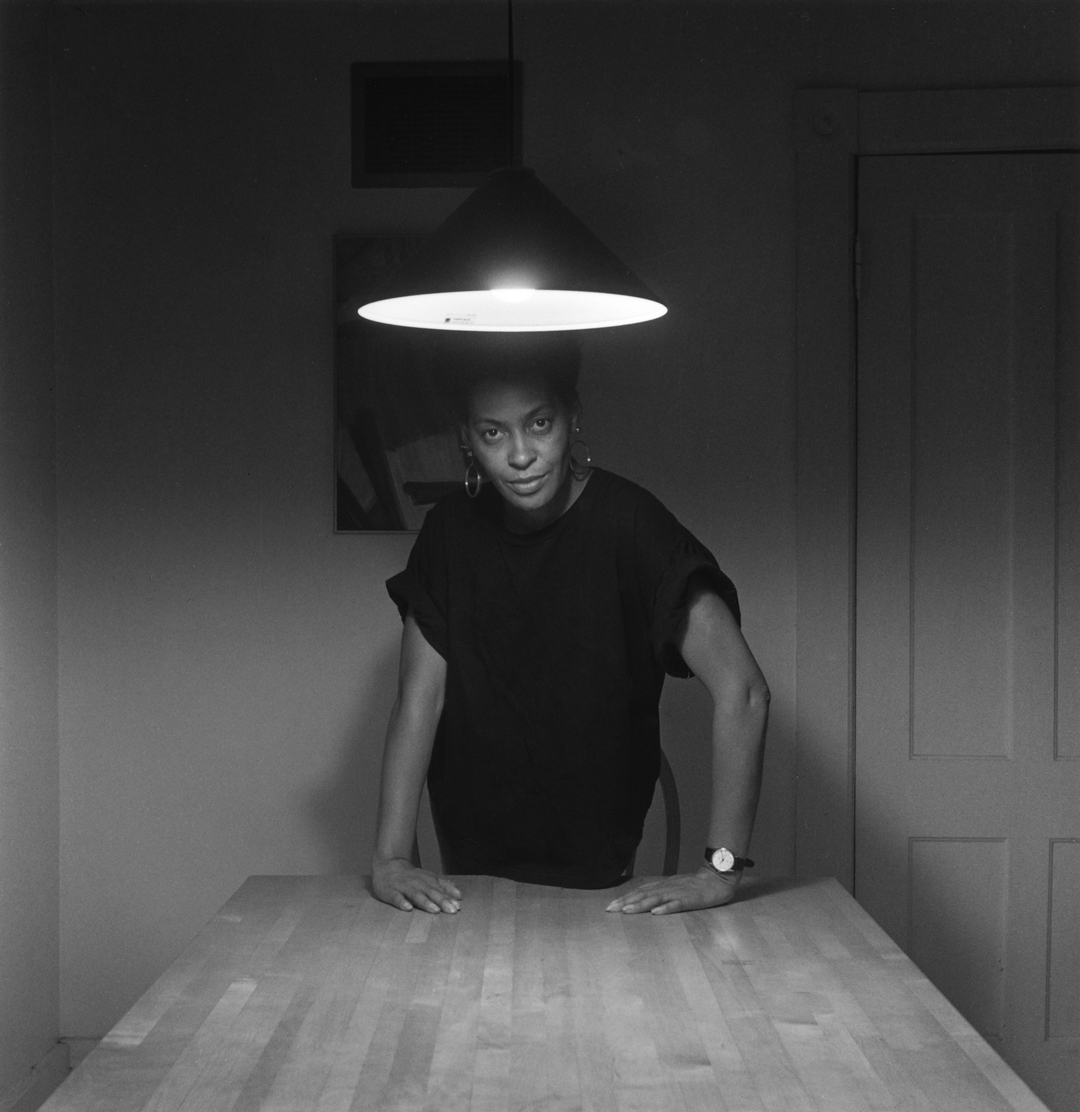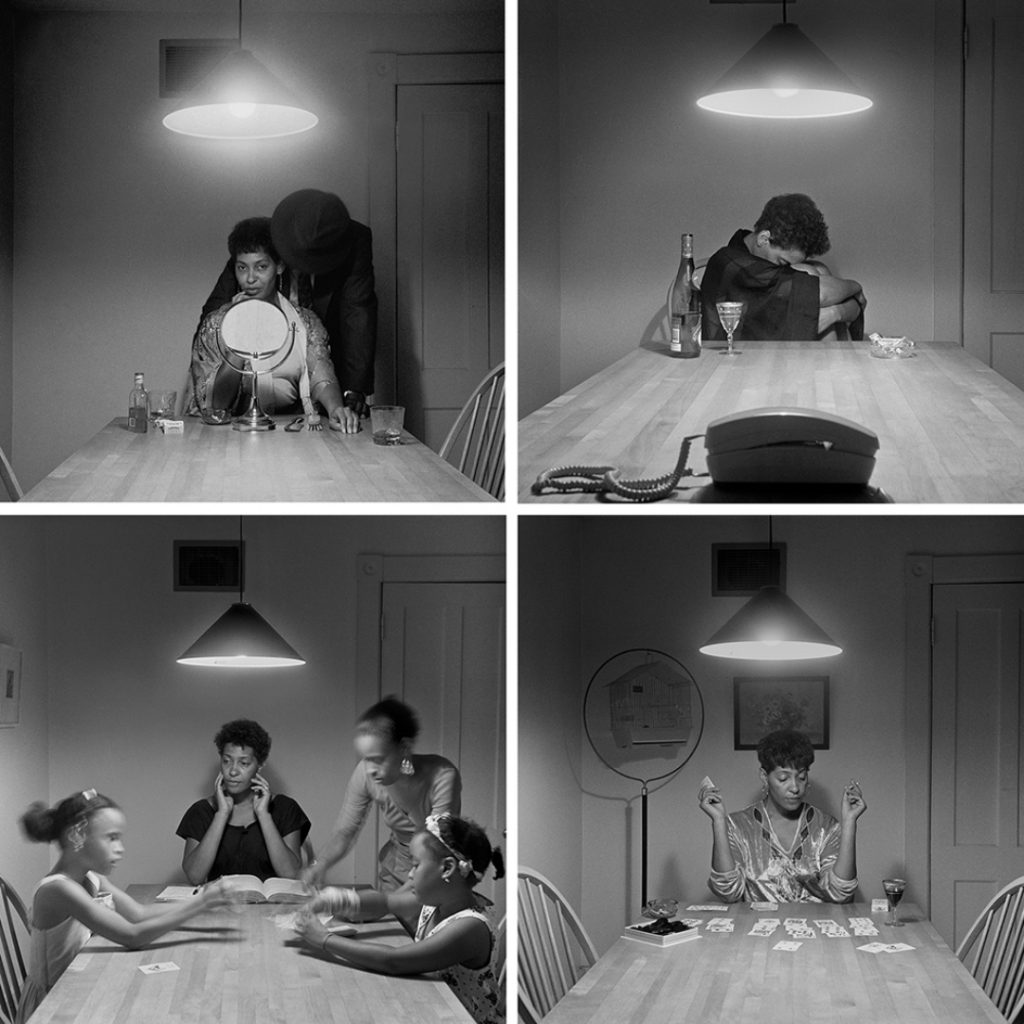Object of the Week: Untitled (Woman standing)

Weems, desiring freedom while poised in the face of a troubling historical ground, beckons the viewer with the question: can you see me, which is not a matter of faculty but one of recognition.
– Adrienne Edwards, “Scenes of the Flesh: Thinking-Feeling Carrie Mae Weem’s Kitchen Table Series Twenty-Five Years On,” 2016
Untitled (Woman standing) is one of 20 carefully staged photographs in the Kitchen Table Series by Carrie Mae Weems. Focusing on the daily life and domestic space of a subject played by the artist, the photographs are often read as autobiographical. While self-representation is no doubt central to this body of work (loosely based on Weems’s own experiences), Untitled (Woman standing)—and the rest of the Kitchen Table Series—is a meditation on the way Black women are represented in American culture more broadly.
Together, the photographic series stages intimate scenes, all taking place around the kitchen table. Captured from the same vantage point, we see a range of quotidian moments: Weems’s character embracing—and being embraced by—her lover, playing cards with her daughters, seeking consolation from friends, and, every once in a while, by herself in moments of sadness, contemplation, happiness, pleasure, and, in this instance, confidence. The series represents the various roles she inhabits as a mother, friend, daughter, romantic partner, and sexual being.
Interested in systems of power and oppression, Weems mobilizes photography to challenge the medium’s assumed authenticity and explore its fictional possibilities, ultimately controlling the narrative she presents to viewers. And while Weems’s character is often the focus, she is never the sole subject of the composition—the evolution of her relationships is a central topic. In addition, curator Adrienne Edwards calls attention to the role the table plays in the series, addressing its presence as an important conceit:
Along with Weems, it [the kitchen table] is a recurring figure in the photographs. The table’s symbolic significance is a direct reference to the structures that shape and reinforce the intersection of the concepts of race, gender, and class that are at the center of Weems’s art.[1]
Throughout the series, the table acts as a witness to the cast of characters in the domestic space. Here, it is as if Weems, pressing down on the table surface, is pushing against its stability and order in an attempt to upend it. Similarly, the hanging lamp can be seen as a metaphor for illumination—shedding light on “fundamental issues concerning American society and culture and black women’s role in it”—while also pointing to another use for such a light: interrogation.[2]
In the words of the artist, “My responsibility as an artist is to work, to sing for my supper, to make art, beautiful and powerful, that adds and reveals; to beautify the mess of a messy world, to heal the sick and feed the helpless; to shout bravely from the rooftops and storm barricaded doors and voice the specificity of our historical moment.”[3]
– Elisabeth Smith, Collections Coordinator
